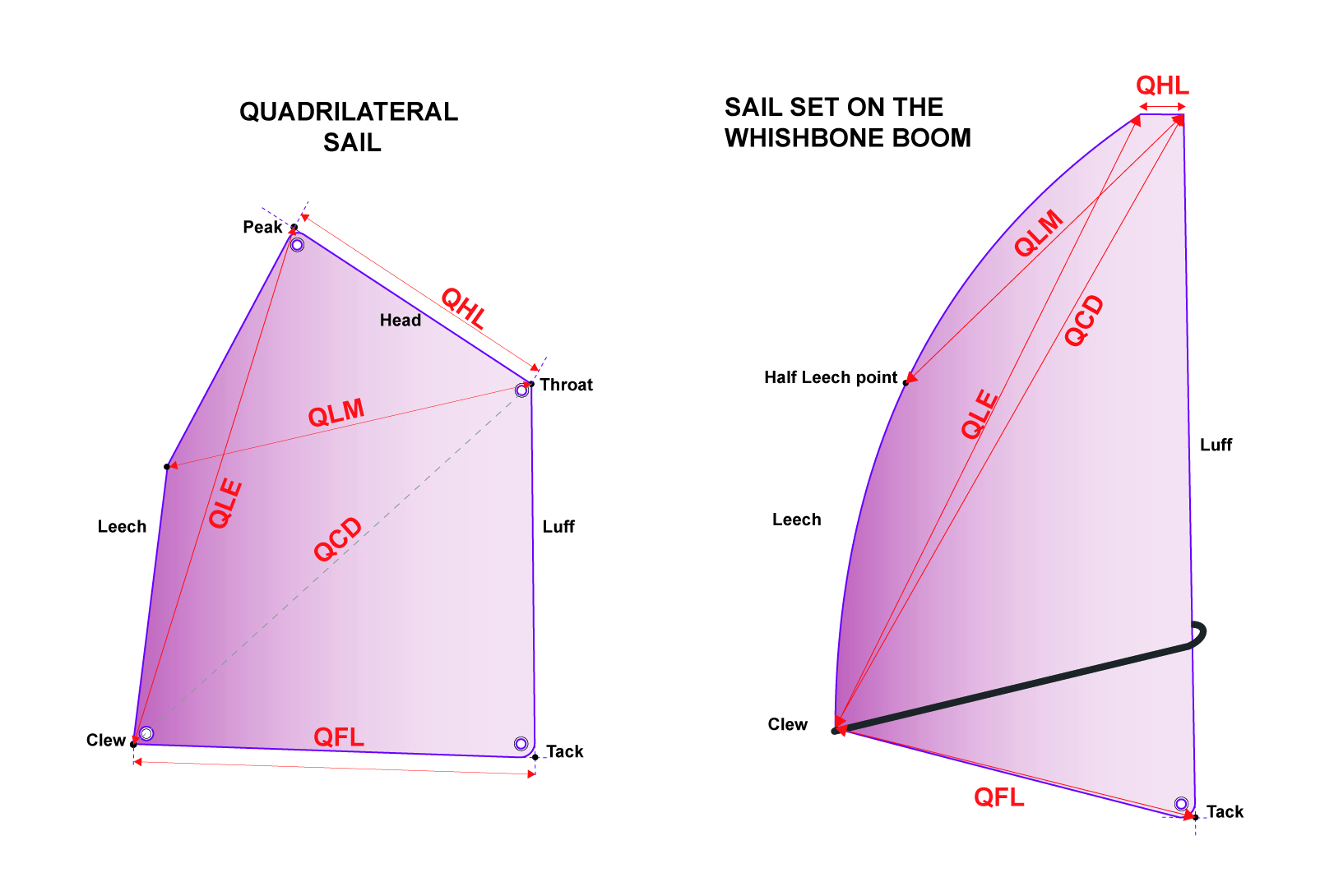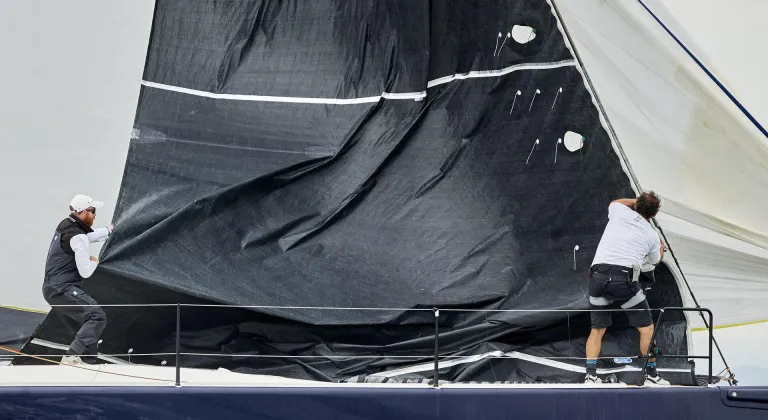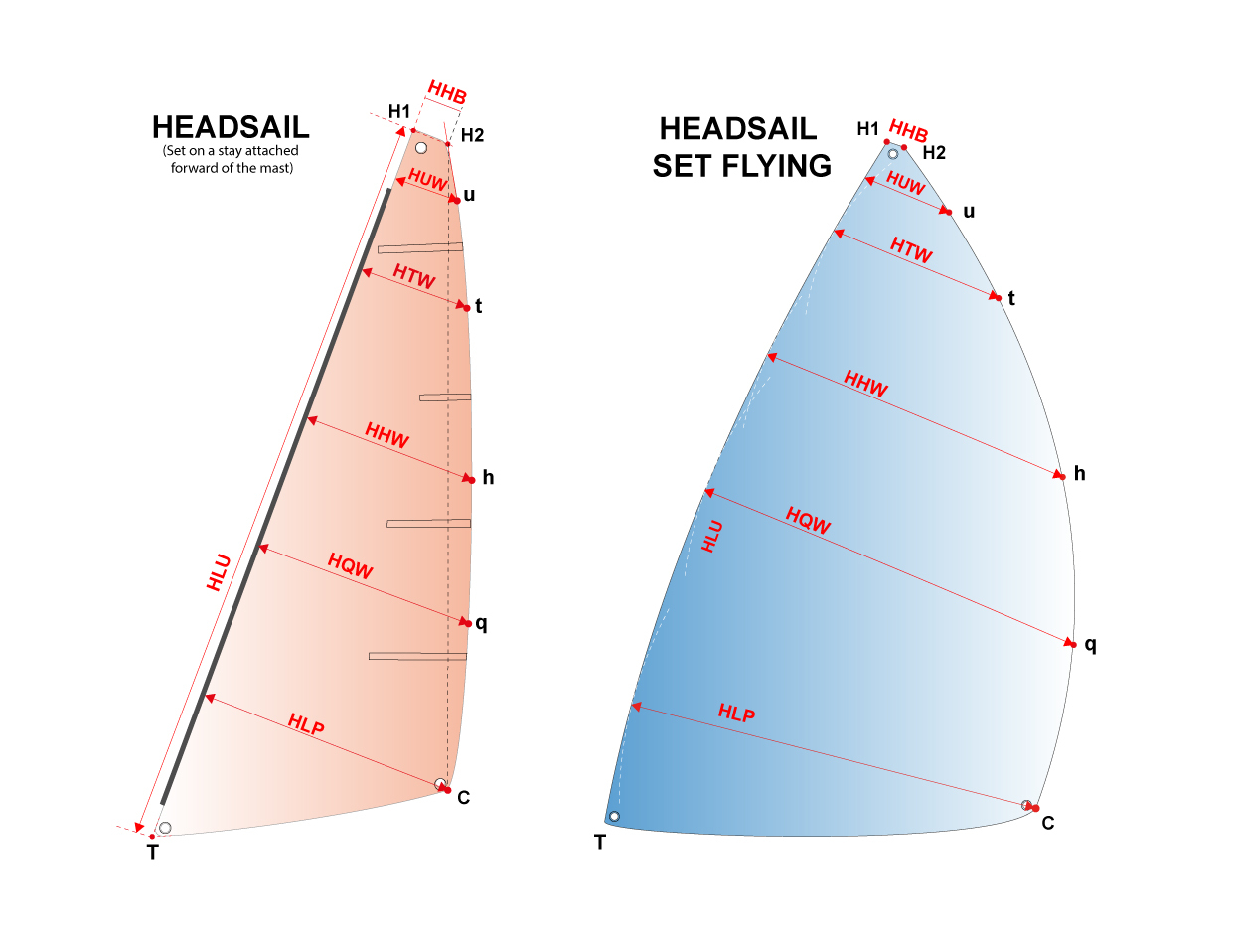Sails are measured completely in accordance with the WS Equipment Rules of Sailing (ERS). Sails shall be dry when measured, and on a flat surface with just sufficient tension to remove any wrinkles across the line of the measurement being taken. The following type of sails can be measured:
- Mainsail
- Mizzen
- Headsail
- Mizzen staysail
- Spinnaker
The maximum number of sails allowed on board while racing (not including storm and heavy weather sails required by the WS Offshore Special regulations) is defined by the ORC Rating Rule 206 as follows:
| CDL | Above 13.550 | 13.550 - 11.271 | 11.270- 9.361 | Below 9.631 |
|---|---|---|---|---|
| Mainsail | 2 | 2 | 2 | 2 |
| Headsails | 8 | 7 | 6 | 5 |
| Spinnakers | 6 | 5 | 5 | 4 |
| Mizzen staysail | 1 | 1 | 1 | 1 |
| Mizzen | 1 | 1 | 1 | 1 |
Headsails include those set on the forestay and headsails set flying.
Spinnakers include symmetric and asymmetric.
Mainsail and Mizzen
The mainsail is measured with width at the top (MHB) and four widths found on the leach between head and clew: at 1/4 (MQW), 1/2 (MHW), 3/4 (MTW) and 7/8 (MUW) leech heights. Points on the leech are found by folding the sail to find equal distances between clew and head or between two adjacent measurement points. The height of the mainsail luff (P) and mainsail foot (E) are measured on the mast and boom as part of the rig measurements. The basic formula for the mainsail area is:
The mainsail measured area is calculated by the simplified trapezoid formula above, dividing the luff in amounts of 1/4, 1/2, 3/4 and 7/8. However, the mainsail rated area is calculated by using the actual heights on the luff from the tack point to the points where mainsail widths are measured. The amount of roach will therefore proportionally increase the rated area from the measured one by giving the exact area and centre of effort height for square top and other high roach main sails.
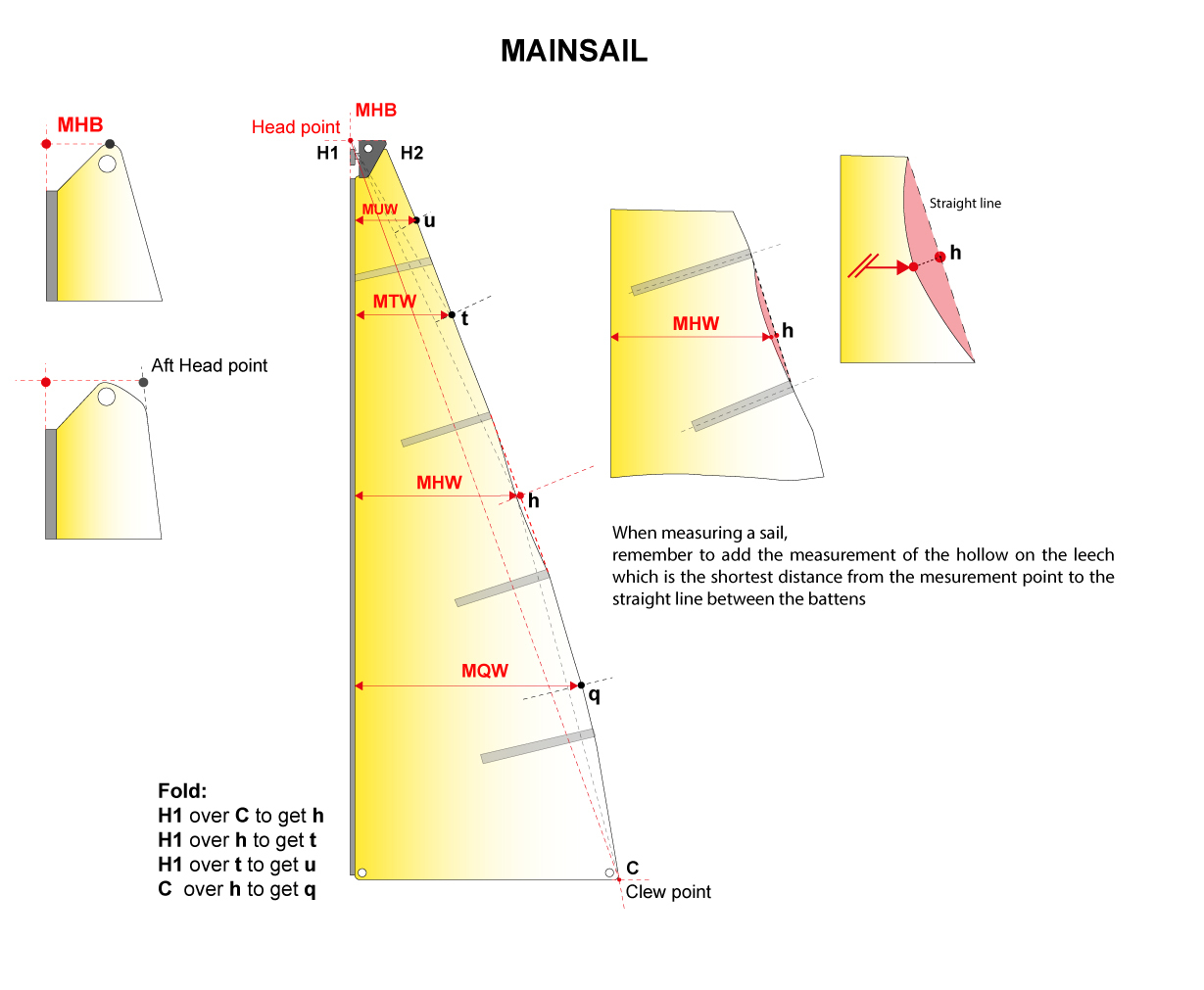
If there is a batten above the 7/8 (MUW) leech point, then the top width (MHB) measurement is increased taking in account effect of a batten positioned this high on the mainsail.
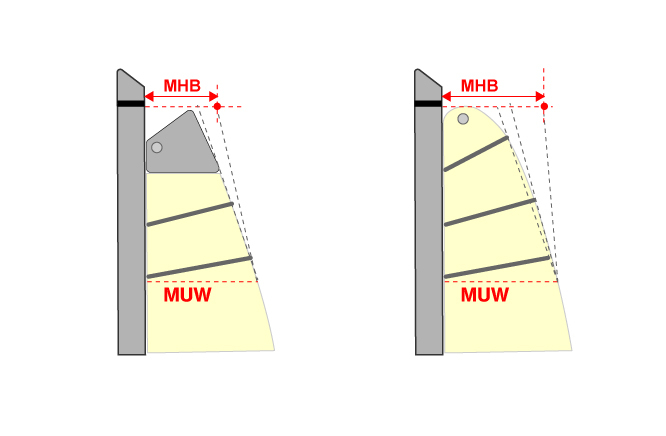
Mizzen measurements are the same as for the mainsail, with all corresponding measurements abbreviations having "Y" as a suffix.
Headsails
Headsails shall have the distance between half luff point and half leech point of less than 75% or the foot length.
Headsails may be set on the forestay or set flying, i.e. with no sail edge attached to the rig. As a part of measurement process, headsails shall be flagged when set flying and/or having battens.
Headsail measurements are similar to those of the mainsail, including the top width (HHB) as well as four widths found on the leach between head and the clew: at 1/4 (HQW), 1/2 (HHW), 3/4 (HTW) and 7/8 (HUW) leech heights.
Points on the leech are found by folding the sail to find equal distances between clew and head or between two adjacent measurement points. Additional measurements for headsails are: luff length (HLU) and luff perpendicular (HLP) as the shortest distance from the clew point to the luff.
Spinnakers
The half width of any spinnaker shall be 75 % or more of the foot length.
The symmetric spinnaker shall be symmetric in shape, material and cut, about a line joining the head to the center of the foot. The symmetric spinnaker shall not have adjustable leech lines. Any spinnaker not qualifying as symmetric shall be considered as asymmetric. Where the asymmetric spinnaker is tacked on the centerline, tack pennants of any length may be used. Battens are not permitted on any spinnaker.
Spinnaker measurements include: leech length (SLU), luff length (SLE), half width (SHW) as the distance between midpoints on the luff and leech and the foot length (SFL).
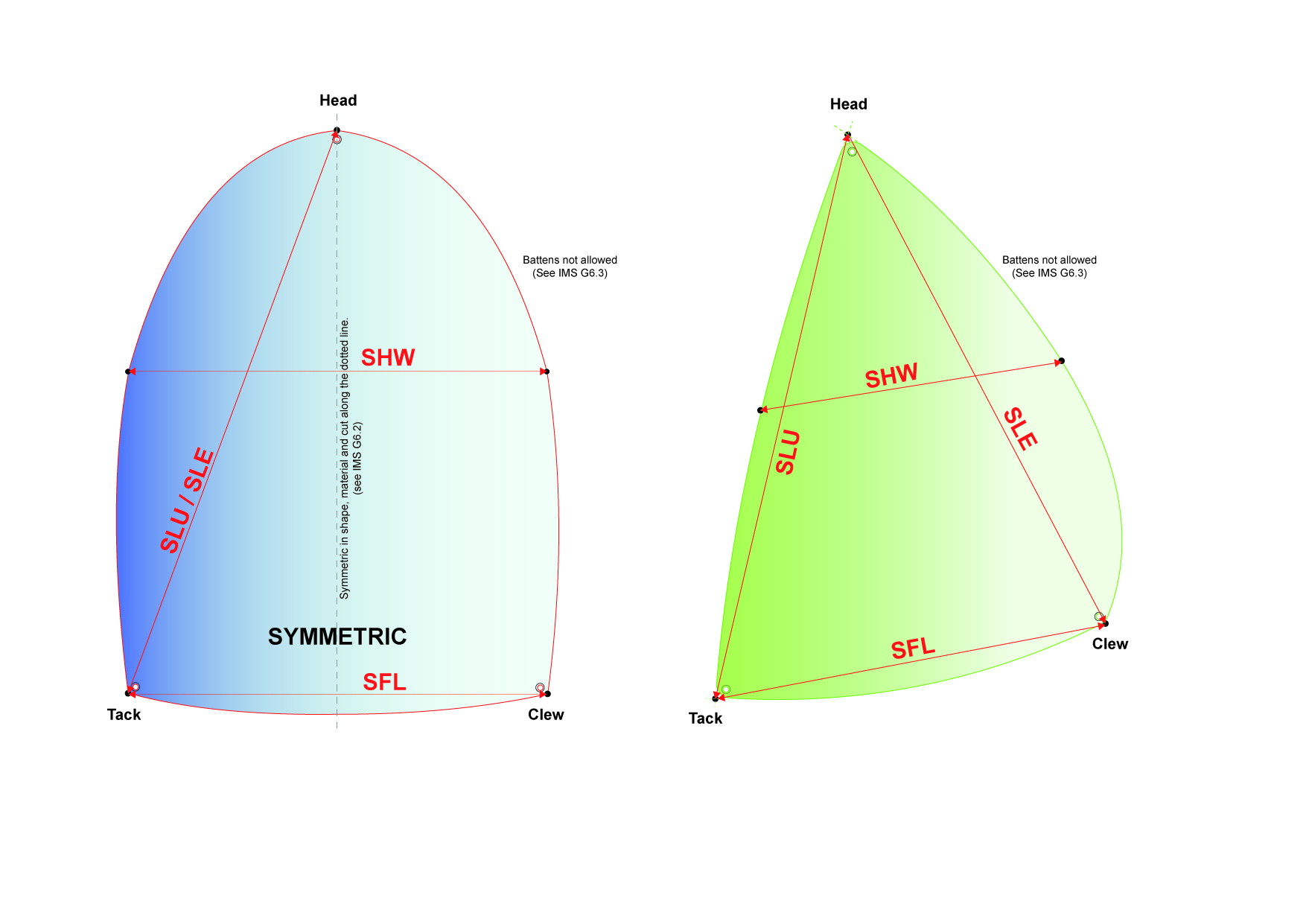
Mizzen staysail
Mizzen staysails shall be three-cornered. The longest side edge shall be taken as a luff, the shortest edge shall be taken as a foot, and third edge shall be taken as a leech. Mizzen staysail measurements include: YSHF as the shortest distance that can be measured from head to foot, YSHW as the half width or distance between midpoints on the luff and leech, and YSFL as the foot width.
Quadrilateral sails and sails set on the wishbone boom
Quadrilateral sails and sails set on the wishbone boom shall be measured according to the ERS – Subsection B. The following measurements shall be taken: Leech length as QLE, head length as QHL, foot length as QFL, clew diagonal as QCD as well as the distance between the half leech point and the throat point as QLM.
